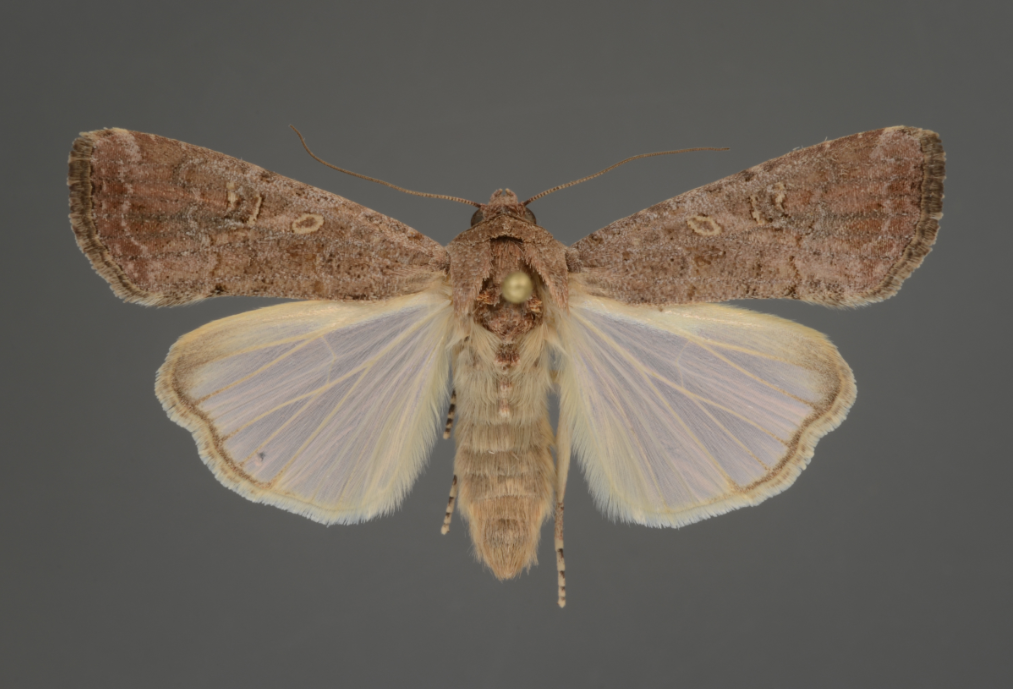It’s an exotic pest with a track record for decimating summer crops around the world, and now Australian growers need to be on the lookout.
Despite its name, fall armyworm (Spodoptera frugiperda) is actually a moth caterpillar and native to tropical and subtropical regions of the Americas. Over the last four years, infestations have affected crops in Africa and South-East Asia, putting the financial security of many farmers at risk.
In Australia, fall armyworm was first detected near the Torres Strait at the beginning of 2020, before being found near Bundaberg at the end of Autumn. Since then, positive identifications have been made of moths captured throughout Queensland, Moree, Narrabri and west of Wee Waa (New South Wales), Katherine (Northern Territory) and as far as Kununurra (Western Australia) and now Dubbo (NSW).
“Fall armyworm moths are capable of moving up to 100 kilometres overnight if conditions are suitable,” said Dr Mark Stevens, a Principal Research Scientist and Institute Director at Yanco Agricultural Institute, NSW Department of Primary Industries.
“It’s disturbing that it has moved so swiftly in Australia in a relatively short timeframe and it’s appearance in inland NSW so early during spring is a particular cause for concern. Fall armyworm cannot survive low winter temperatures, so these moths must have rapidly moved south from Queensland, or from another area with relatively mild winter conditions.”
Dr Stevens added “Moths dispersing from warmer locations, where conditions are suitable for overwintering, can establish damaging populations elsewhere and multiply over several generations, causing substantial damage before falling temperatures in late Autumn impact on their survival.”
With a ravenous appetite and a taste for up to 350 different plant species, fall armyworm poses a significant threat to Australian agriculture. Summer crops are particularly vulnerable as the moth thrives in warm weather putting the maize, sorghum, rice, ginger, sugar, cotton, fruit and vegetable sectors on high alert.
Monitoring key in detecting fall armyworm
With the capacity to consume large quantities of a crop in a short space of time, active monitoring of crops is key in minimising the damage caused by the invasive pest.
The NSW Department of Primary Industries has set up a network of 45 surveillance traps which have led to the detection of the fall armyworm in Wee Waa and Moree, but landholders should be on the lookout for signs of crop damage that could indicate the presence of a pest.
“Growers with vulnerable crops, including rice, should be monitoring their crops for fall armyworm as part of their existing crop management strategy, at least weekly,” Dr Stevens advised.
“There are a number of identification guides available on the Internet, but farmers should look out for areas of crop damage and conduct visual inspections. If you find a suspicious-looking caterpillar or moth, it should be submitted to your state Department for Primary Industries for an official identification without delay.”
The adult fall armyworm has a wingspan of 3-4 centimetres with a distinctive brown-grey patterned forewing and a plain white hindwing. Juvenile larvae are light brown in colour, becoming darker as they grow with white lines and dark spots.
If populations of the pest are detected and formally identified, there are a number of available chemical control options that can effectively control fall armyworm outbreaks.
“We know that the fall armyworm has a level of resistance to some chemical controls so we would encourage farmers to select the right insecticide in line with their local state agriculture department or agronomist,” said Dr Stevens.










